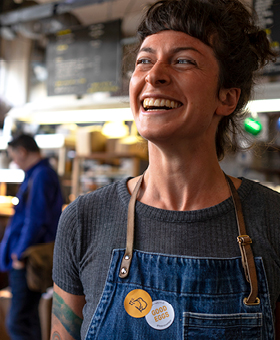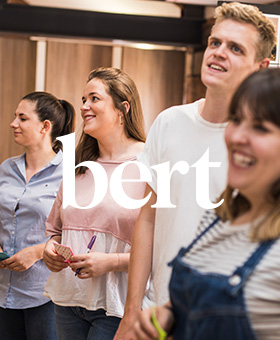The Intention-Behaviour Gap
Why what people say they’re going to do and what they actually do do aren’t always the same thing (and how you can bridge the gap!)
—
We’ve all been there. January rolls around after a month of heavyweight seasonal indulgence, and out come the grand plans.
“I’ll go to the gym properly.”
“I’ll stop smoking.”
“I’ll eat healthy this year. I really will.”
And by February all that’s left is a trail of steaming wreckage. The debris of missed targets, broken goals and shattered dreams.
Unsurprisingly, scientists have a name for this sort of thing. It’s a psychological phenomenon called the “intention-behaviour gap”, and new year resolutions are just
one example of the gap in action. The reason that it’s of particular interest to us as brand communications professionals is that it is also evident – very evident – in patterns of consumer behaviour.
So, will understanding the gap a little better help us to be more effective for our clients? I set out this month to discover exactly that…
Procrastination nation
My first port of call was the Bert studio itself. A straw poll of our stylish, talented team revealed that under these cool, calm exteriors, the intention-behaviour gap is definitely alive and well.
Unactuated desires range from playing football to home cooking to learning a new language. All eminently achievable goals that these otherwise bright, energetic people are frustrated by their inability to attain.
But why? Admittedly we have busy jobs, families and other commitments (who doesn’t?) but work-life balance was not cited as an issue. Indeed, the challenges seem to run deeper, relating to confidence, motivation, willpower, distraction. Psychological constraints, in other words.
I must confess: the language goal was mine. As an experiment I gave myself one month to brush up on my German, fully equipped with digital device and learning app.
Did I succeed?
No. No I did not.
Clearly it was time to consult the men in white coats.
The science bit
It’s not just in the fields of health, fitness and personal attainment that the “intention-behaviour gap” manifests itself, despite much of the academic literature focusing on this. Politics is another important example of an area where the gulf between stated intention and (voting) behaviour has confounded pollsters and delivered unexpected results in recent years.
As noted above though, and of relevance to us as professionals, consumer behaviour is also subject to this phenomenon. This is most strikingly observed in the discrepancy between product consumption and environmental concern.
Put simply, the rate at which people report that they are concerned about the planet does not match the consumption behaviour they exhibit.
Moreover, across categories, discrepancies are evident between the quality of product people claim they purchase and actual price points they purchase at.
So, are we all just fibbing to ourselves (and the world?)
Well, according to the research, the “gap” is not empty. Far from it. In fact it is filled with barriers of different kinds.
Don’t mind the gap
“Information deficit” is identified as an important barrier: when people know more about the benefits of a behaviour they are more motivated to engage in it.
The so-called “individuality” barrier can best be summed up as a “this isn’t really for me” mindset; while avoidance behaviour, the procrastination we all know so well,
is facilitated by both the absence of externally-imposed urgency, timescales, milestones
and deadlines, and the presence of indulgences and distractions which are perceived to be easier or simply more familiar.
What’s a marketeer to do? Fortunately, there are techniques which appear to help bridge the gap when it comes to consumer behaviour, as well as examples of these techniques
in action.
Think about successful recent “nudge” campaigns like Movember and Stoptober.
These may be more in the “health and social” category than simple consumer, but the principles of the campaigns are widely applicable, and they all directly address those barriers: simple, clear information and tasks, strong messaging about universality and achievability (“you can do it”), and strict timescales.
In other words, let people know exactly what they stand to gain, what they need to do, and when, and they are more likely to jump the gap and translate intention
into behaviour.
Sounds like a pretty strong checklist for any campaign to me.
For myself, with the festive season already looming large, I’ll be heading into January with a renewed insight into my own behaviour. German-fluency, here I come!
(But don’t let this stop you from indulging in at least a few treats over the festive period, intentions are allowed to be ‘to eat as much turkey and chocolate as possible’ if that’s what makes you happy.
Learning: there’s always an exception that proves the rule.)
—
Emily Adams, Planning and Marketing Executive, Bert









